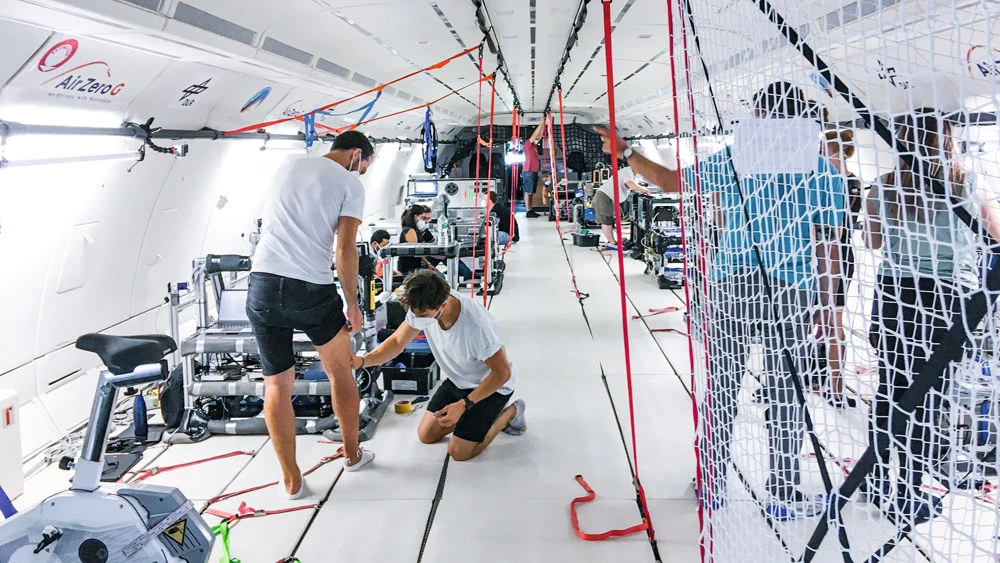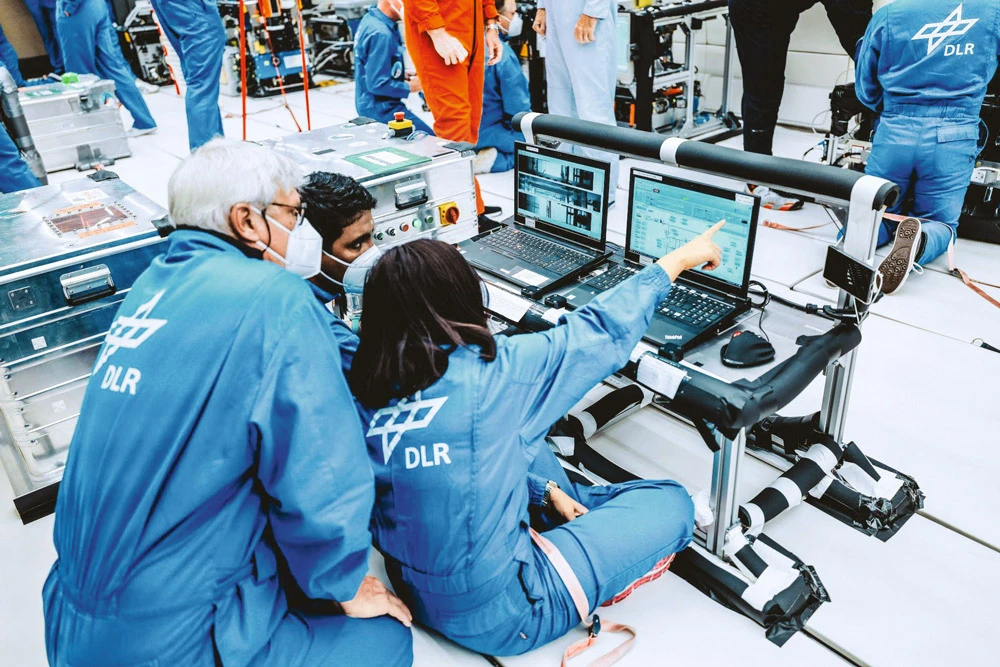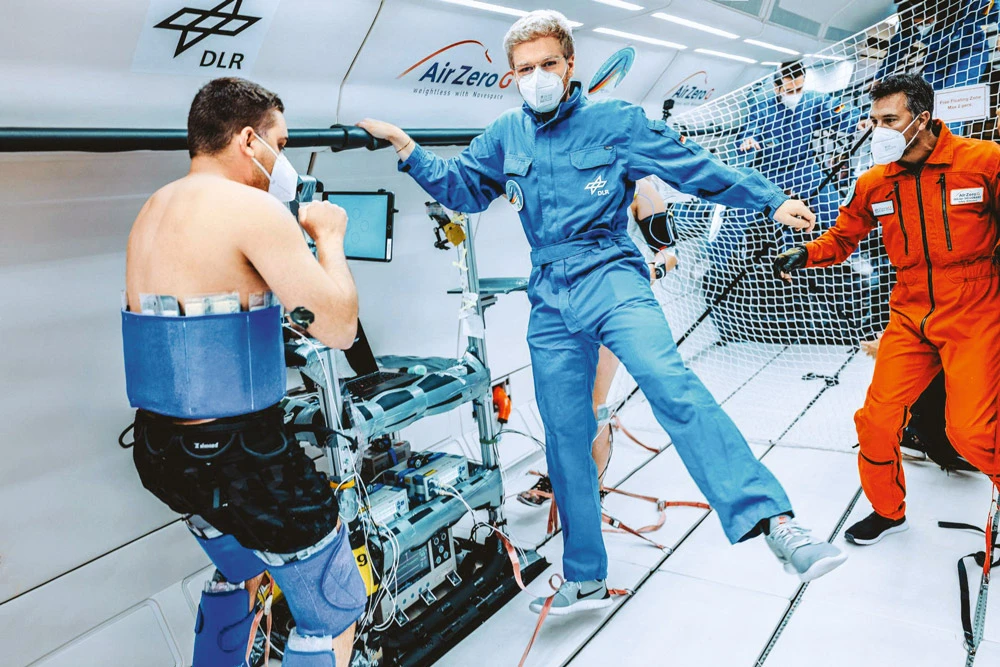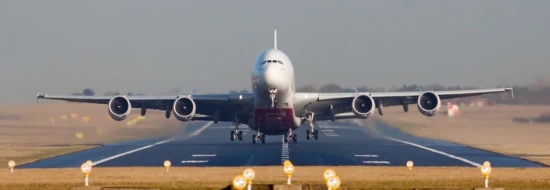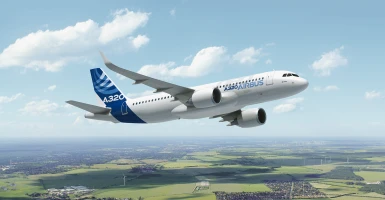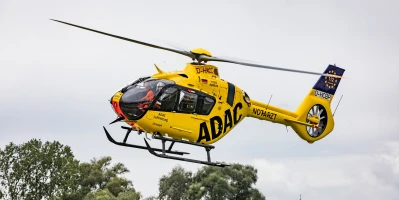good-to-know
A brief guide: Parabolic flights
Parabolic flights in an Airbus A310 let astronauts and researchers achieve weightlessness without going into space.
author: Andreas Spaeth | 4 mins reading time published on: 07.12.2022
author:
Andreas Spaeth
has been traveling the world as a freelance aviation journalist for over 25 years, visiting and writing about airlines and airports. He is frequently invited to appear on radio and TV programs to discuss current events in the sector.

©CNES
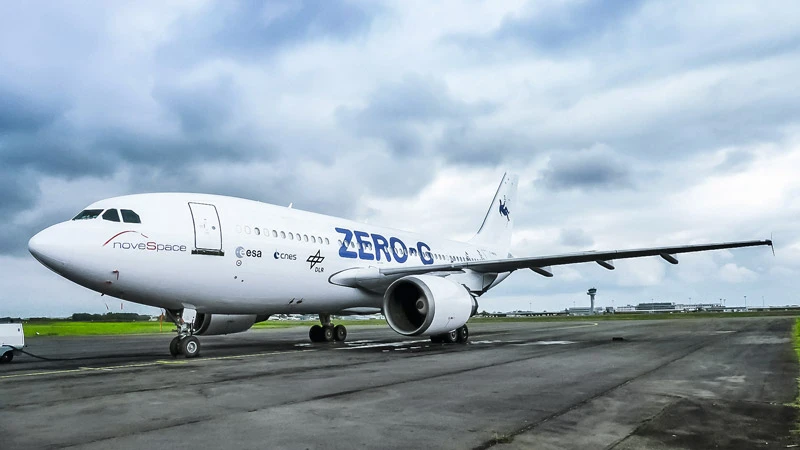

©CNES


©CNES
22 seconds of weightlessness: To achieve weightlessness outside of space, special aircraft perform parabolic flights.
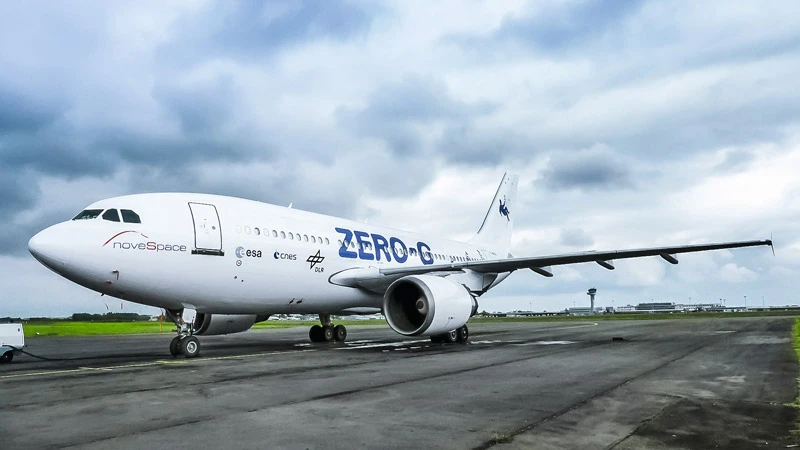
©CNES
What is parabolic flight?
These are special missions where the aircraft flies along the line of a parabola up to a maximum of 31 times in a row. This creates weightlessness on board for up to 22 seconds each time, as if in space. The principle is based on physical laws: An object is weightless when it is in free fall. If you throw a ball into the air, it is weightless and will follow a parabolic trajectory. An aircraft performing a parabolic flight achieves free fall while it is on this trajectory much as the ball does.
What are parabolic flights used for? By whom?
For scientific experiments to be performed on or by humans in zero gravity, the only option (aside from traveling to outer space) is parabolic flights. That makes these flights especially important for the preparation of space missions and experiments planned for them, but also for research in general. Many substances as well as biological, physical or medical processes can be produced or studied particularly well under zero-gravity conditions. Astronauts and scientists use parabolic flights to acclimate their bodies to space and to familiarize themselves with experiments to be conducted there. However, most providers also let members of the general public fly on certain flights for prices of around 6,000 to 8,000 euros per person.
What is a typical parabolic flight like?
From a normal cruising altitude of about 6,000 meters, the aircraft goes into a steep climb. After 20 seconds, it reaches a pitch angle of about 50 degrees, compared to the 18 degrees that are usual during takeoff. This subjects the aircraft to “hypergravity,” a force equal to 1.8 times the Earth’s gravity (1.8 g). During this phase, which is the most strenuous for the body, the aircraft’s occupants are usually lying on the cabin floor. At this point, the pilot cuts back on the power, setting the engines almost to idle. Even without forward thrust, the aircraft gains almost another 1,000 meters of altitude thanks to the physics of momentum alone before entering free fall along a trajectory shaped like a downward-opening parabola (hence the term “parabolic”). By the time it reaches the apex of the parabola at roughly 8,500 meters, the aircraft’s velocity is only about 380 km/h. During the last phase of its climb, at its highest point and while the aircraft heads downward at a steep pitch angle of 42 degrees, there is a total of 20 to 22 seconds of zero gravity on board. Then the pilot steps back in, applying strong thrust to bring the aircraft back into level flight—1.8 g of hypergravity again prevails for about 20 seconds.
What’s the history of parabolic flights?
In the 1950s, the U.S. and the Soviet Union used two-seater fighter and training jets for astronaut training in zero gravity. Then in the 1960s, NASA was the first to operate larger special-purpose aircraft such as converted KC-135 tankers (the military version of the Boeing 707) to fly parabolic flights. These aircraft were nicknamed “the vomit comet.” In 1989, the French space agency CNES put a converted Caravelle into service as the first European parabolic flight vehicle, which flew missions until 1995. The Soviet Union converted a total of three large Ilyushin Il-76MDK transport aircraft for this purpose. From 1996 to 2014, Europe’s Novespace operated the oldest surviving Airbus A300 for zero-g missions. Built as the third prototype in 1973, today the aircraft is on exhibit at Cologne Bonn Airport.

AirZero G by Novespace: The only operator of zero-gravity flights in Europe has 30 years of experience in this field.
What equipment do these aircraft carry?
Former commercial aircraft that are converted for parabolic flights are left with just a few seats, which are used during takeoff and landing. Most of the cabin is empty, with mats and padding all around as well as rails to which the experiments can be fixed. In the cockpit, there are additional accelerometers and screens showing the activity in the cabin. Only in the Ilyushin Il-76MDK were structural changes made and the oil and fuel supply to the engines modified.
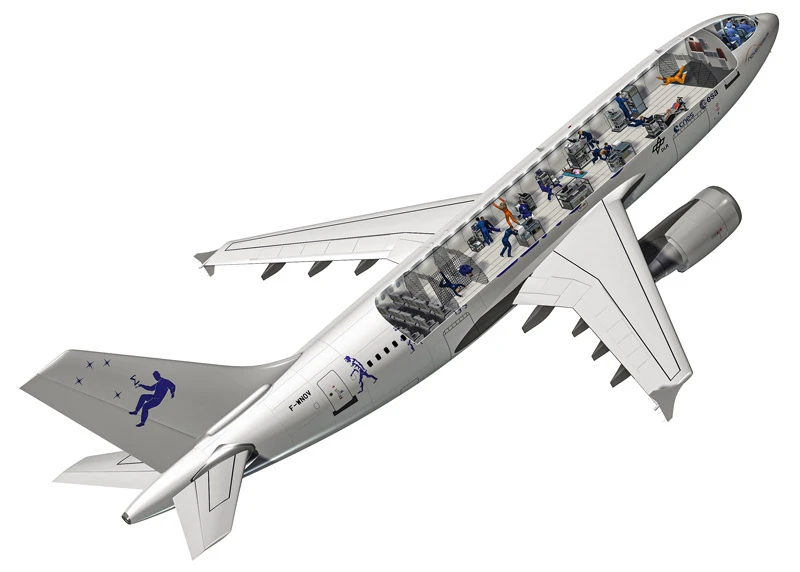

©CNES/Novespace/, 2017


©CNES/Novespace/, 2017
Parabolic aircraft: Most of the cabin is empty, with mats and padding all around.
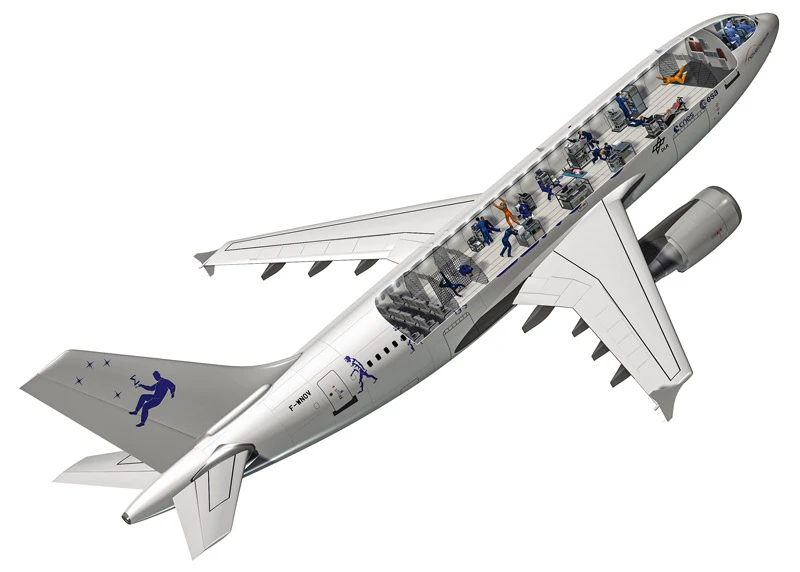
©CNES/Novespace/, 2017
What aircraft can fly parabolic flights?
A handful at most. In the U.S., a Boeing 727-200 built for Braniff in 1976 continues to fly and has been performing zero-g flights for both NASA and enthusiasts since 2004. The Europeans have an Airbus A310-300 with a 33-meter cabin, which is the largest parabolic aircraft currently in service. It can carry as many as 40 passengers on board and is operated by Bordeaux-based Novespace under the name AirZero G. This aircraft has a special history: Initially, it was delivered to the East German airline Interflug in 1989. Then, in 1991, it became the VIP aircraft of the German Air Force’s Special Air Mission Wing. Christened “Konrad Adenauer,” it flew Chancellor Helmut Kohl and later Angela Merkel and their respective ministers around the world. In 2014, the A310 took up its new role at Novespace.
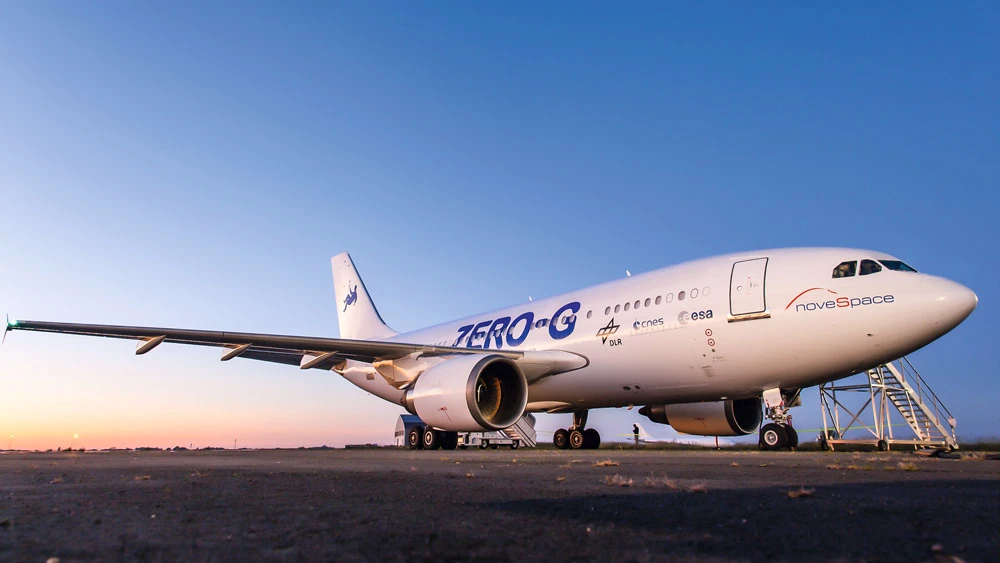
©CNES/ROUQUETTE Sébastien, 2017



